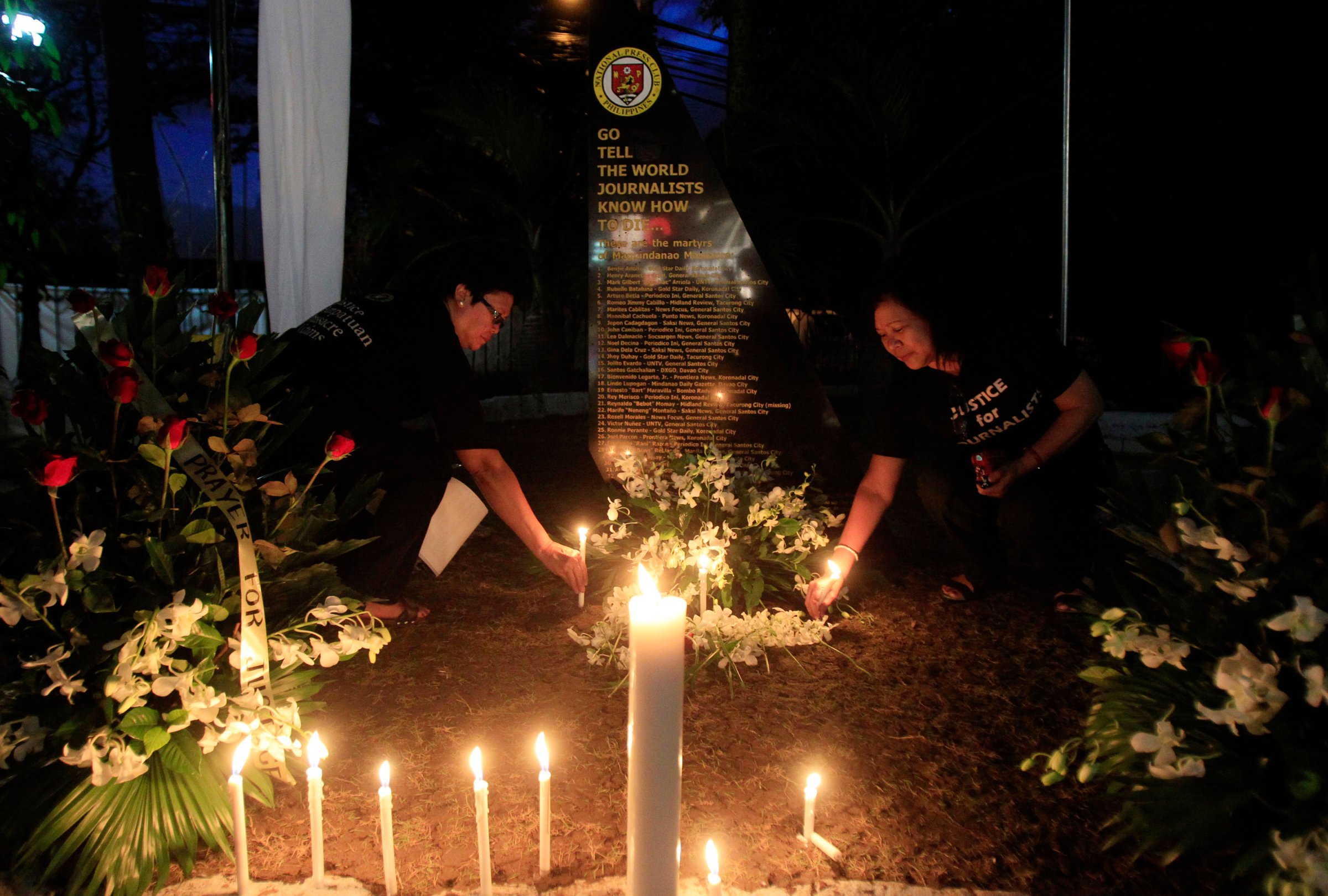
The killers used a state-owned backhoe to dig a pit, then shoved the bodies in. When investigators arrived on the scene of Nov. 23, 2009, massacre in Ampatuan — a small town in the southern Philippine province of Maguindanao — they found the bullet-riddled corpses of 57 men and women, dozens of whom were journalists.
It has now been five years since the worst-ever act of election violence in the Philippine history, and the worst recorded attack on journalists the world has known. By now, the awful details of what happened that day are well established: 57 people, en route to register an opposition candidate for an upcoming election — or, in the case of journalists, to cover that registration — were stopped, executed by gunmen, and buried on site. It was a brutal, sloppy job; the executioners, it seems, were not worried about getting caught.
Five years on, that culture of impunity persists. Though the Philippine’s popular President, Benigno Aquino III, promised swift action on the case, there have been no convictions. Lawyers for the clan accused of orchestrating the massacre — who, like the town are also called Ampatuan — have successfully stalled as prosecutors scramble to hold together their case while assailants track and target witnesses. (Many of the alleged masterminds plead not guilty on charges related to the deaths and deny involvement.)
The trial is a case study in intimidation and abuse. Human Rights Watch (HRW) and have others documented multiple attempts to silence witnesses with cash. Where that fails: violence. Four witnesses have already been killed, including Dennix Sakal, once a driver for one of the chief suspects, who was this month shot to death as he drove to meet state prosecutors. “Dead men tell no tales,” was the bitter remark of the National Press Club.
Even before the killings in Maguindanao, the Philippines was considered one of the world’s worst countries for journalists. More than 100 journalists have been killed in the line of duty since the 1980s, according to local rights groups, and those who target media personnel usually go unpunished. The Committee to Protect Journalists estimates that upwards of 90% of killers walk free.
Part of the problem is that swaths of the country are controlled by political clans with private armies and legal protection. A 2010 HRW investigation into the Maguindanao killings described them as “an atrocity waiting to happen.” The 96-page report was titled They Own People — a reference to family that, with the help of local police and military personnel, “has controlled life and death in Maguindanao for more than two decades.”
Aquino was supposed to stop this. Early in his term, the scion of an altogether different political family promised to eliminate private armies that thrived under his predecessors, and to pursue justice for Maguindanao. But his government’s handling of the Maguindanao case, as well as the use of violence against media in general, is seen by ordinary people and rights activists alike as a striking and somewhat perplexing failure. The Philippine Center for Investigative Journalism (PCIJ) says that 23 journalists were killed in the first 40 months of Aquino’s tenure — the worst rate since 1986.
Asked about violence against journalists during a press conference with President Obama last spring, Aquino bungled his reply. First, he said that “something like 52 journalists,” were killed at Maguindanao, when the total dead was 57, of which no more than 32 were journalists. Many were surprised by his confusion over a basic fact about an atrocity that, as the PCIJ describes it, “put the Philippines on the world map.”
He then appeared to suggest that the journalists who were killed were corrupt and that this was the reason justice was slow in coming. “Perhaps we are very sensitive to personal relationships by the people who are deceased who were killed not because of professional activities, but shall we say, other issues,” he said.
Graft has been endemic in Philippine journalism for years, but the unfounded suggestion — if that it what it was — that the reporters killed at Maguindanao were corrupt, or that they somehow brought about their own fate, or that they deserved less than swift, sure justice, is naturally outrageous and the President’s comments have appalled the Philippine media corps.
“The lack of justice in Maguindano has merely emboldened those who would kill journalists,” says Shawn Crispin, an adviser for the Committee to Protect Journalists who has investigated the case. “If they can’t prosecute worst ever massacre of media personnel in the history of the world, what message do you send?”
More Must-Reads from TIME
- Cybersecurity Experts Are Sounding the Alarm on DOGE
- Meet the 2025 Women of the Year
- The Harsh Truth About Disability Inclusion
- Why Do More Young Adults Have Cancer?
- Colman Domingo Leads With Radical Love
- How to Get Better at Doing Things Alone
- Michelle Zauner Stares Down the Darkness
Write to Emily Rauhala at emily_rauhala@timeasia.com